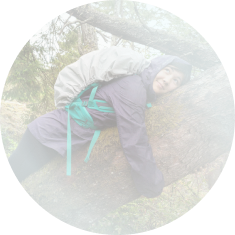Wilderness Programs
What are Wilderness
Programs and are they
right for my child?


PROGRAM FACTS

What is the typical duration?
Most Wilderness programs last between 10-12 weeks and will completely take your teen off the grid. The program will require each student to stay the full duration.

Who is a good fit?
Wilderness programs are primarily designed for teens who would benefit from being taken completely out of their normal life.

Do they work?
There is an ongoing debate about the science behind whether such programs work, but for many families these programs have provided the safe space, time away, and intervention that teens need to break harmful cycles and refocus.
Q & A
Wilderness Programs
The basic concept behind wilderness therapy programs is that teens experiencing serious mental and/or addiction issues need, as a first step, to be removed from their current environment, get away from technology, connect with nature with experienced supervisions and a regime of intensive therapy. The concept is that, with a group of peers also struggling with different issues, and with trained clinicians performing intervention through individual and group therapy, the kids have a chance to break their negative patterns and refocus.
In this digital age, it is very common for our children to have an aversion to the outdoors and have a tendency to stay glued to their screens. Wilderness therapy programs are experienced in working with children who do not enjoy the outdoors. . Part of the challenges and lessons in adaptability and resilience lie in the children’s (sometimes slow and resistant) acclimation to spending a significant amount of time outdoors. Disconnecting from screens, technology, social media, and having no other option than to spend time in nature is part of the process. Learning to overcome frustrations related to the hardships of living outdoors is all a part of wilderness therapy programming. Some of these learning experiences might include the discomfort of carrying a backpack, dealing with bugs, making fires, cooking outside, learning how to navigate rough terrain, thinking for the group and being accountable to one’s own actions, and planning for the various obstacles that the outdoors may present.
Generally, children leave wilderness with a newfound appreciation and respect for the outdoors. (Or at least elements of “Type 2 Fun” — when it wasn’t fun in the moment, but in reflection and discussing, you realize how you overcame the obstacle and now enjoy sharing the story.)
If your teen is willing to go (many, if most, are not), then you can arrange transport to the program. You can accompany your child, however most of the programs will insist that you leave your child with them at the airport. This may be the hardest and most awful thing that you will ever do, but when the circumstances warrant, it can be integral in breaking the dysfunctional cycle your teen is in.
If your teen is not willing to go, there are “transport” programs that will come in the middle of the night to take your child from bed. The teens call it getting “gooned.” We have had parents describe standing there with tears streaming down their faces as it happened. The people who run the transport programs are experienced and will get your child through the airport and to the program safely. Yes – your child will likely be terrified and very angry at you for weeks if not months. Many of them will thank you later and sometimes it is the only way to remove a child from their current environment and ensure they receive the help they need in an immersive program.
All wilderness programs will expect significant family involvement. The concept is that while the child needs individual focus and treatment, the whole family, but especially the parents, are a critical part of the healing process. Most wilderness programs will start off with a period of limited to no contact to give children a chance to acclimate to the program and to move through their initial grief and anger before they first talk to you. Keep in mind that they may still be very upset and angry when they do talk to you – it is SO HARD – but it is also very normal! The different programs have varied structure and timing for family incorporation, but it frequently moves from a period of no contact while each teenager works with program therapists, followed by guided letter writing exchanges or other narrative activities, moving on to individual and family therapy, and later on in-person facilitated parent visits. You should absolutely expect to go visit and spend several days with your child as part of the therapy process.
If you evaluate different wilderness programs, ask what kinds and level of engagement is expected of the family. The more, the better.
These programs are expensive and, unfortunately, at least to date, most insurance companies will cover only a small amount of the cost (usually only specific periods that can be attributed to therapy with a professional). The costs vary, but you can expect to pay somewhere between $9,000-$12,000 per month – often around $500 a day. These costs cover everything such as food, supplies (except your child’s personal belongings like clothing clothing), and intensive individual and group therapy.
Deciding what comes next after wilderness therapy is made in tandem with the family and treatment team. Because a significant part of wilderness therapy is assessment and stabilization, the team will give their recommendations and offer directives for next steps. Good programs will help with recommendations for next steps. Occasionally, you may also want to involve an Educational Consultant to give their assessment and recommendations. Education Consultants are an additional cost, but a good one can be very helpful recommending programs tailored to your child’s specific issues and personality.
Wilderness is not right for every child. Many families choose to send their child directly to a residential treatment program or therapeutic boarding school. Or, of course, you may choose to keep your child at home and seek treatment locally.


